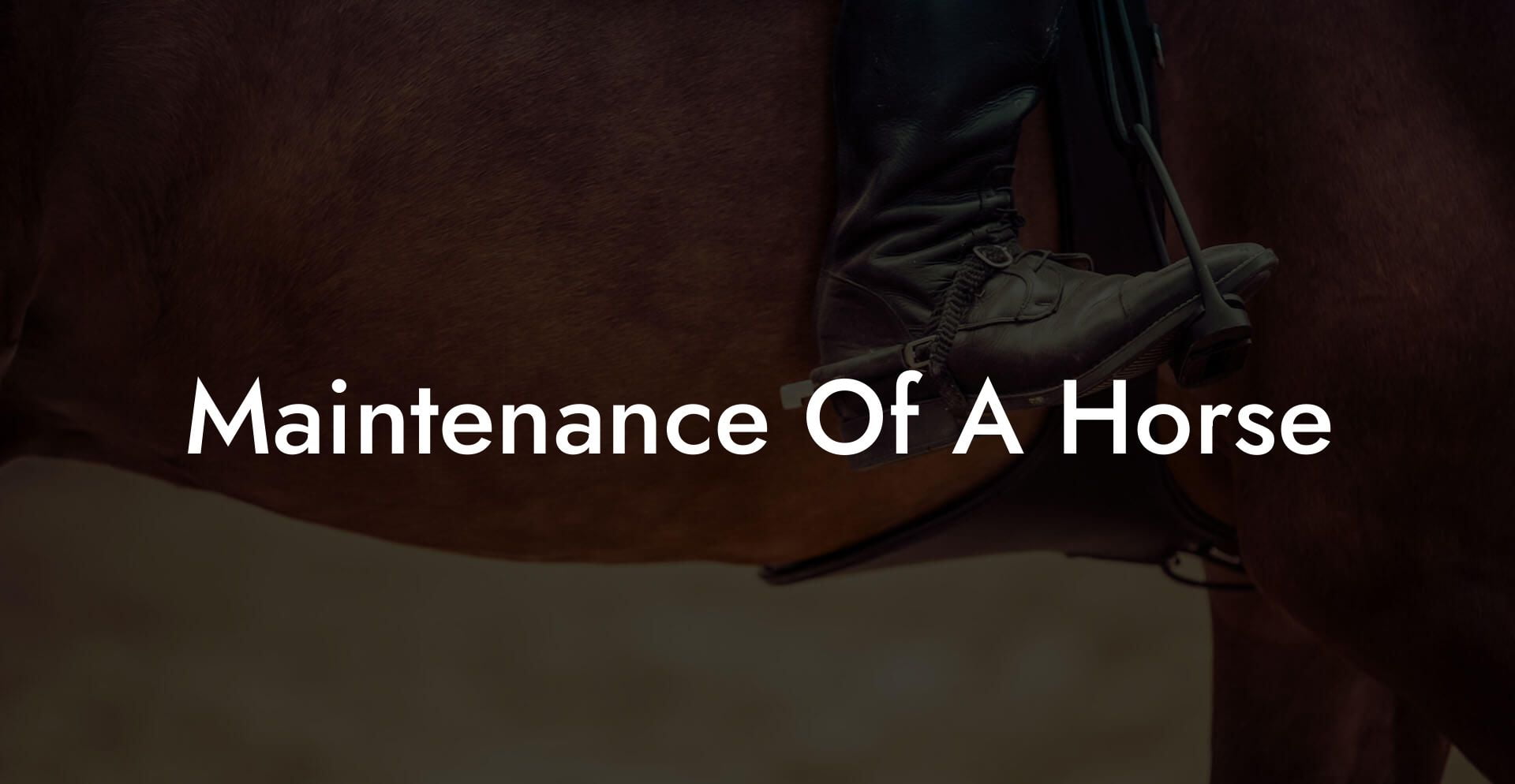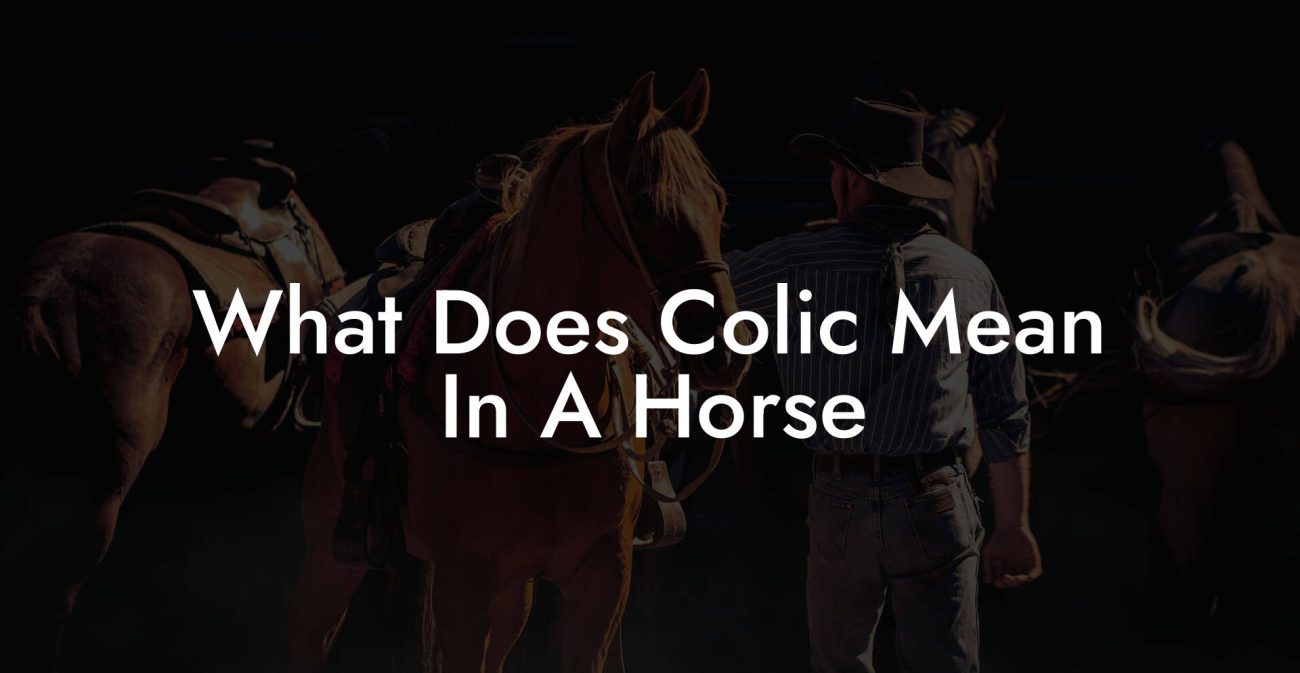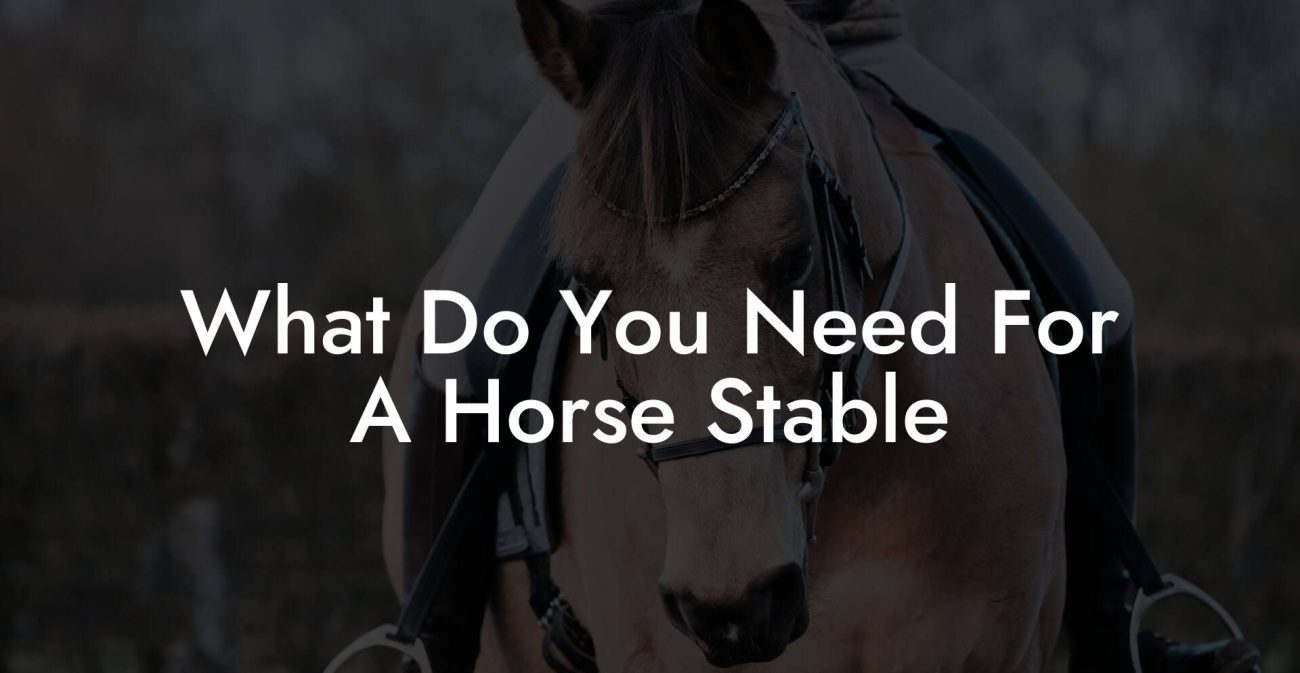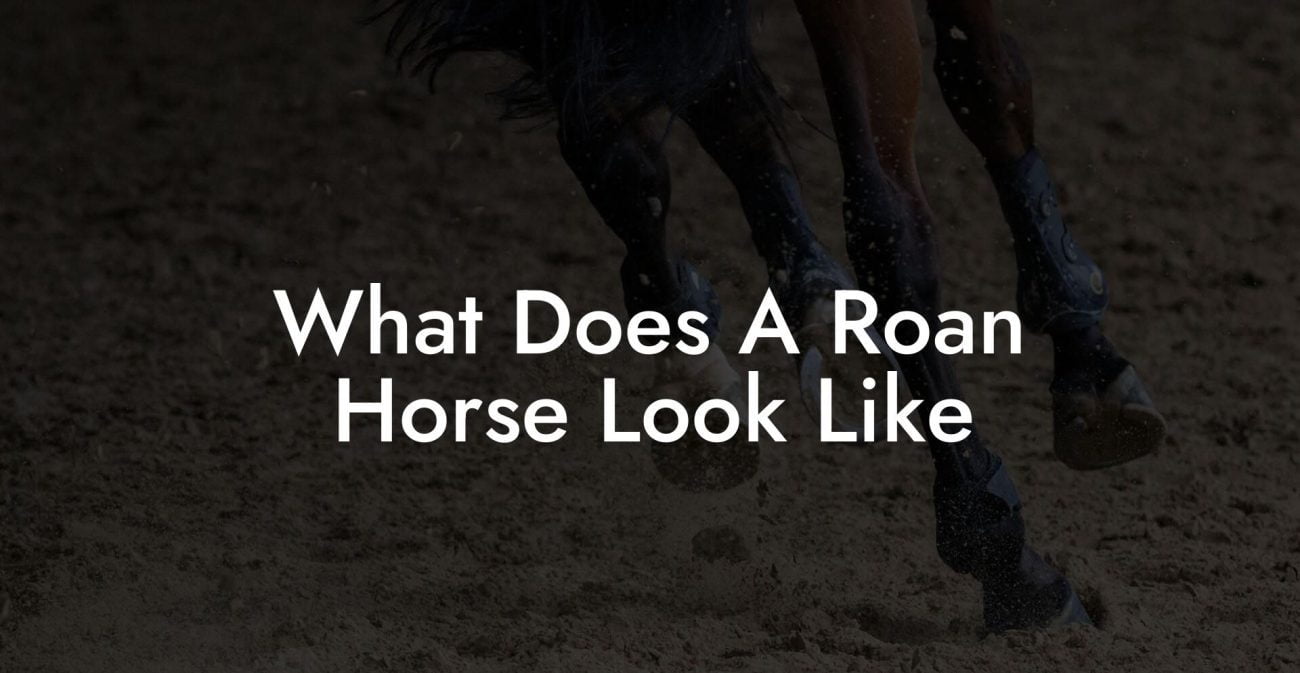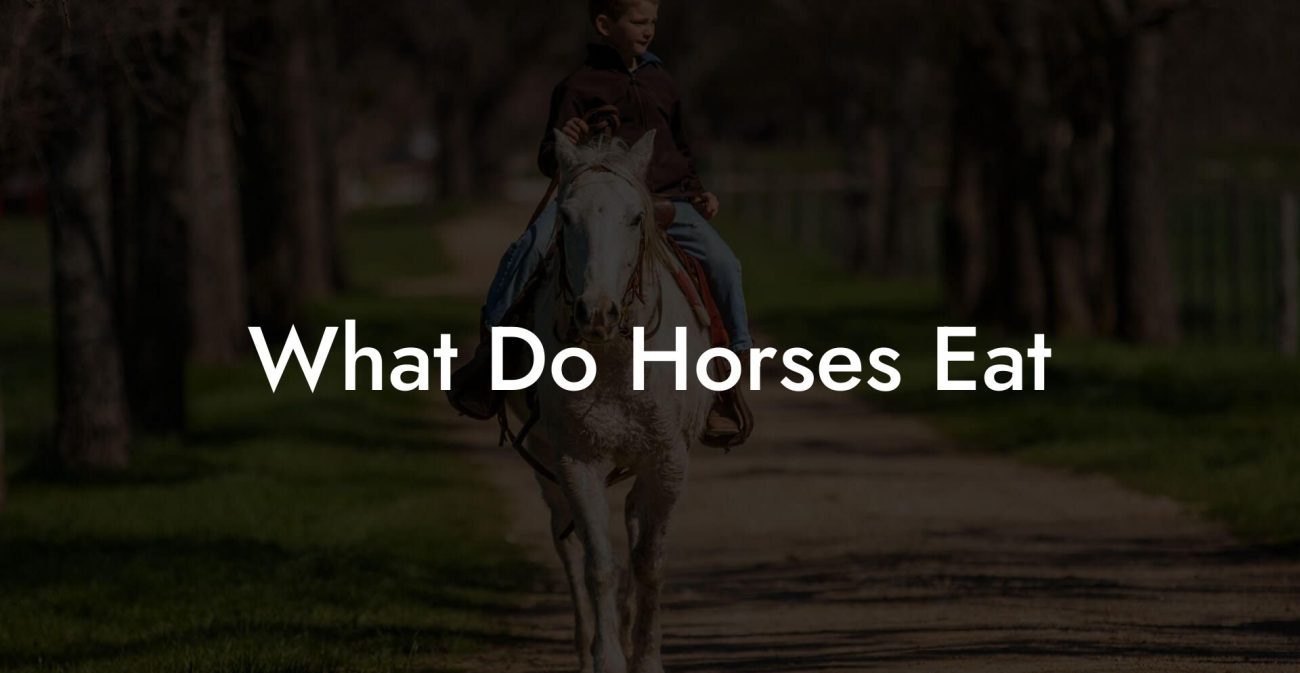Ever thought that keeping a horse in tip-top shape is like curating the ultimate life-hack for a majestic, four-legged friend? Picture your equine buddy as both your ride-or-die companion and a living piece of art that demands passion, precision, and a sprinkle of humor to stay fabulous. In the following guide, we’re diving deep into the “Maintenance Of A Horse” with the vibe of a Gen-Z TikTok tutorial meeting old-school cowboy wisdom, unfiltered, unapologetic, and oh-so practical.
Quick Links to Useful Sections
- Understanding Horse Maintenance: More Than Just a Pretty Mane
- Daily horse care: Your Equine Skincare Routine
- Grooming, Bathing & Hoof Care: The Ultimate Horse Spa Day
- Nourishing Your Equine Companion: Equine Nutrition 101
- Health Check-Ups and Veterinary Care: The Equine Medical Diaries
- Exercise, Training & Mental Wellness: Keeping the Gallop Alive
- Stable Management: Creating a Safe and Stimulating Home
- Seasonal Horse Care: Riding Through Nature’s Mood Swings
- Tech & Trends in Equine Maintenance: When Horses Meet High-Tech
- Training and Bonding: Building Trust One Trot at a Time
- Resources and Community Support: Your Next Steps
- Integrating Equine Maintenance With Your Lifestyle: Tips and Tricks for the Modern Horse Enthusiast
- Equine Behavior and Communication: Understanding the Silent Language
- Horse Fitness and Rehabilitation: Keeping the Powerhouse in Prime Form
- Equine Safety and Emergency Preparedness: When Prep Meets Pearls of Wisdom
- Frequently Asked Questions about Horse Maintenance
- Your Next Steps to Becoming a Horse Maintenance Pro
Understanding Horse Maintenance: More Than Just a Pretty Mane
Horse maintenance isn't just about the occasional grooming session or feeding time; it’s a holistic journey that marries routine care with proactive wellness strategies. Whether you're a seasoned equestrian or a newbie stepping into the world of horses, mastering the art of equine upkeep means embracing a lifestyle that intertwines nutrition, exercise, health check-ups, and a keen eye on stable management.
Think of it like maintaining your favorite pair of sneakers, except these sneakers whinny, have a flowing mane, and require a lot more love. From preventing common hoof injuries to engaging in playful bonding moments, every detail in horse maintenance counts. Get ready for a deep dive into everything from basic grooming tips to complex stable setups that promote long-term vitality for your equine friend.
Daily horse care: Your Equine Skincare Routine
If you thought your daily skincare regimen was extensive, wait until you meet the routine required for horse care. Just as you wouldn’t skip your morning face mask or smoothie bowl, your horse needs its own daily dose of pampering to keep that coat shiny and those hooves healthy.
Daily horse maintenance includes essential tasks like checking water supplies, cleaning out feed buckets, and ensuring a clean living space. This routine helps in preventing illness, addressing minor issues before they turn major, and maintaining a bond that goes far beyond the stable.
Here are some key daily habits for every horse owner:
- Fresh Water and Balanced Feeding: Just as you start your day with a nutritious breakfast, your horse begins with a clean trough of water and a balanced meal of hay, grains, and supplemental feed that meets its dietary needs.
- Stable Tidiness: A clean stable is crucial for avoiding infections and ensuring comfort. Remove soiled bedding daily and keep the area well-ventilated to prevent respiratory issues.
- Quick Health Check: Take a few minutes each day to examine your horse's eyes, ears, hooves, and coat. Early detection of small sores, irritations, or behavioral changes can help prevent more serious issues down the line.
- Mental Stimulation: Even horses get bored! Offer toys, rotate grazing fields, or engage in interactive play sessions to keep your horse mentally sharp.
Embracing a daily care routine isn’t tedious, it’s an essential part of the equestrian lifestyle that not only ensures your horse’s good health but also deepens your connection.
Grooming, Bathing & Hoof Care: The Ultimate Horse Spa Day
Horse grooming is truly a labor of love. Picture yourself as a stylist at a horse spa, where the mane and tail get the VIP treatment, and every hoof is a mini masterpiece. Grooming goes far beyond looking pretty; it’s an essential part of horse maintenance that keeps your horse comfortable, healthy, and feeling like a superstar.
Brushing and Combing: Regular brushing is essential to remove dirt, sweat, and shed hair from your horse’s coat. Use a combination of soft and hard brushes to prevent skin irritation and stimulate blood flow. A well-groomed horse not only looks good but also stays comfortable.
Bathing: When was the last time you indulged in a bubble bath? Horses, too, relish the occasional wash. Use horse-specific shampoos that respect the natural oils in the coat. Always rinse thoroughly to avoid residue that could cause itching or skin problems.
Hoof Care: Perhaps the most critical aspect of grooming is hoof care. Scheduling regular visits from a farrier to trim hooves, check for cracks, and fit horseshoes is a non-negotiable for long-term hoof health. Despite what every Instagram post may suggest, a horse’s hooves are not just about style, they are literal foundations for your horse's mobility and overall well-being.
Regular grooming also presents a wonderful opportunity to bond with your horse. As you chat away and gently massage, you’re reinforcing trust and calming nerves, qualities that are as essential in a companion as they are in a pet.
Nourishing Your Equine Companion: Equine Nutrition 101
Feeding your horse is a task that goes hand in hand with its overall maintenance. Like our own pursuit of the perfect avocado toast or matcha latte, equine nutrition is a balancing act that requires careful planning and attention to detail. To keep your horse energetic and vibrant, a nutritious diet tailored to its specific needs is paramount.
Forage First: Grass and hay form the backbone of a healthy horse diet. They provide the necessary fiber for a properly functioning digestive tract. Think of hay as your horse’s natural probiotic, keeping everything in balance.
Supplemental Feeds: Depending on your horse’s energy needs, you might want to add grains and specialized concentrates. Horses in intense training or those with special dietary requirements might need additional nutrients or vitamin supplements. Always consult with your veterinarian or nutrition specialist before introducing new supplements into the routine.
Hydration: We’re all about that H2O, and so are horses! Accessible, fresh water is essential every day. For horses in stables or pastures, constant access to clean water can make the difference between a sluggish mood and a spirited canter.
Minerals and Electrolytes: Just like you might reach for a sports drink after a tough workout, horses require balanced levels of minerals such as salt, calcium, and phosphorus. Electrolyte supplements can help maintain energy during extended periods of exercise or during extreme weather.
The key to excellent equine nutrition is balance. Overfeeding concentrates can lead to metabolic disorders, while underfeeding energy can cause fatigue. Finding that “just right” balance keeps your horse thriving.
Health Check-Ups and Veterinary Care: The Equine Medical Diaries
Just as we schedule our annual health check-ups, horses also need regular veterinary visits to maintain their peak condition. Routine health examinations extend beyond vaccinations, veterinary care is a comprehensive review of all things equine.
Regular Check-Ups: Schedule biannual or quarterly visits depending on your horse’s age and activity level. A veterinarian can spot minor issues, such as early signs of lameness or dental problems, before they escalate into costly repairs or long-term injuries.
Vaccinations and Deworming: Staying on top of vaccinations protects your horse against widespread diseases. Regular deworming is crucial too, as parasites can wreak havoc on your horse’s digestive system and overall health.
Emergency Care: Accidents happen. Let’s be real, horses can be as unpredictable as a trending meme. Keep a well-stocked first aid kit and know your local emergency vet clinics. Having a trusted veterinary contact who understands your horse’s history can be a lifesaver if disaster strikes.
Dental Care: Equine dental issues can cause significant discomfort and impact your horse’s ability to eat. Regular dental check-ups help prevent problems like tooth decay or uneven wear, ensuring that every bite is as smooth as gliding across an Instagram filter.
Don’t view these check-ups as a chore, think of them as spa days for your horse’s insides, keeping everything running smoothly, so every ride is a reminder of how strong and vibrant life can be.
Exercise, Training & Mental Wellness: Keeping the Gallop Alive
Horses are born athletes. Unlike us mere mortals glued to our screens, horses thrive on movement, play, and a healthy dash of training. The key to a happy horse is a balanced blend of physical exercise and mental stimulation, ensuring its body and mind are as aligned as your favorite playlist.
Routine Exercise: Establish a workout routine that suits your horse’s age and temperament. Daily turnout in a pasture, regular arena sessions, or even leisurely trail rides work wonders for muscle tone and overall stamina. This exercise regimen not only prevents obesity and lameness but also keeps the horse’s joints flexible and strong.
Training Techniques: Whether you're teaching new tricks, embarking on advanced dressage, or simply reinforcing basic commands, training builds trust and communication between you and your horse. Use positive reinforcement, think tasty treats and plenty of praise, to create a learning environment that’s both fun and effective.
Mental Stimulation: Horses are smart and social creatures that need mental challenges daily. Introduce puzzle feeders, interactive toys, or varied routines to fend off boredom and reduce anxiety. Even a brief change in scenery during a ride can be a mental refresh for your equine friend.
Socialization: Just like us, horses thrive on social connections. Arrange playdates with other horses or join group riding classes. Social interactions can help reduce stress, curb destructive behavior, and make your horse feel like part of a community.
Blending physical training with mental wellness not only keeps your horse fit but also boosts its overall mood, making every ride an experience filled with vitality and joy.
Stable Management: Creating a Safe and Stimulating Home
Your horse’s stable isn’t just a place for shelter, it’s the heart of its daily life. Just as your living space reflects your persona and style, a well-organized stable speaks volumes about the level of care and attention your horse receives. From safety to stimulation, how you set up the stable can directly impact your horse’s health.
Cleanliness and Ventilation: A clean environment limits bacteria and insects, and proper ventilation helps keep respiratory issues at bay. Regular mucking out and disinfecting of stalls are essential practices. Consider installing fans or vents if you’re in a humid area.
Space and Exercise Areas: Ensure there is ample room to move, run, and engage in healthy play. Whether through paddocks, pastures, or indoor arenas, space is vital. Use safe, non-slip flooring in high-traffic areas to reduce the risk of injuries.
Shelter and Comfort: Your horse deserves a cozy spot to retreat. Provide adequate bedding and shelter from harsh weather conditions. A well-insulated stable makes a huge difference during extreme seasonal changes.
Enrichment and Safety Measures: Add small touches that promote mental stimulation, a few toys, mirrors, or interactive feeders provide daily fun. Simultaneously, ensure that the stable is free from hazards such as sharp objects or unstable structures.
Investing time and resources in stable management isn’t just about creating a neat space; it’s about building a safe, nurturing habitat that enhances both physical and psychological well-being.
Seasonal Horse Care: Riding Through Nature’s Mood Swings
Much like the weather on your social feed, the seasons bring their own set of challenges and opportunities for horse maintenance. Seasonal horse care demands you adjust your routine to suit temperature swings, humidity changes, and seasonal allergens.
Spring and Summer: This is the season of renewal and play. As the weather warms up, your horse can enjoy longer turnout sessions and more vigorous exercise. However, watch out for parasites like flies and ticks. Equip your stable with fly sheets and invest in natural repellents to keep these nuisance bugs at bay. Hydration becomes even more essential, always provide extra fresh water, and consider electrolyte supplements on hotter days.
Fall: As leaves change color and temperatures begin to drop, transition your horse’s diet to include slightly richer forage to help build energy reserves for the cold months. Regular grooming becomes crucial, as shedding excess winter hair can lead to dry, irritated skin. Keep a watchful eye on any changes in behavior or signs of distress from temperature fluctuations.
Winter: Cold weather doesn’t mean hibernation for your horse. Ensuring the stable is warm and dry is vital during winter. Extra bedding, windbreaks, and occasionally increased feed rations can help maintain your horse's body heat. Monitor water sources to prevent freezing, it might even be worth considering a heated water bucket in extremely cold conditions.
By adapting your horse care routines to the seasonal rhythms, you’re not just responding to nature’s whims, you’re proactively planning an environment that supports sustained, optimal health all year round.
Tech & Trends in Equine Maintenance: When Horses Meet High-Tech
In a world where apps, smartwatches, and AI dominate our lives, it’s no surprise that the world of horse maintenance is catching up. Gone are the days of simply eyeballing a stable, now, technology is stepping into the arena, offering innovative ways to monitor and improve your horse’s health.
Wearable Tech: Devices such as heart rate monitors and GPS trackers are revolutionizing how we monitor equine activity. Imagine getting real-time updates on your horse’s stress levels or activity patterns, much like tracking your favorite fitness metrics on your smartwatch. This data-driven approach enables you to fine-tune exercise routines and adjust dietary plans based on your horse’s unique needs.
Mobile Apps & Cloud-Based Tools: There are numerous apps out there designed to help you manage everything from feeding schedules to health records. These digital tools make horse maintenance less guesswork and more of a dynamic, interactive experience, perfect for the tech-savvy equestrian.
Innovative Stable Designs: Modern stable management is taking cues from sustainable architecture. Eco-friendly materials, smart ventilation systems, and automated feeders are just a few emerging trends that combine comfort with efficiency. Integrating these innovations can significantly enhance your horse’s quality of life while reducing your carbon hoofprint.
Embracing technology in horse care is not about letting gadgets steal the spotlight; it’s about leveraging modern solutions to build a safer, healthier, and more connected environment for your equine companion.
Training and Bonding: Building Trust One Trot at a Time
Beyond the nuts and bolts of basic maintenance, the heart of horse care is in building a genuine bond of trust and respect. Whether it’s through daily interactions, routine grooming sessions, or shared training exercises, every moment spent with your horse reinforces the unique connection between you.
Consistent Communication: Horses, like people, thrive on consistency. Use clear commands, gentle gestures, and positive reinforcement to create a language that both you and your horse understand. Over time, this mutual vocabulary cements trust and respect.
Interactive Training Sessions: Move away from rigid training scripts and explore methods like clicker training or natural horsemanship. These approaches not only enhance performance but also make the process enjoyable for both of you. Think of it as a collaborative project where both the trainer and the horse are learning and growing together.
Social Bonding Activities: Incorporate play and rest into your horse’s routine. Group activities, such as pasture games or turnout sessions, offer opportunities for your horse to socialize with peers, helping to reduce stress while building leadership and confidence.
The training and bonding aspect of horse maintenance goes beyond teaching commands, it’s about creating a partnership built on mutual understanding, empathy, and admiration. A well-bonded horse is often a responsive, happy, and even more well-maintained partner.
Resources and Community Support: Your Next Steps
Navigating the realm of horse maintenance can feel overwhelming, but you’re not in this field alone. The equestrian community is as diverse as it is welcoming, and there are countless resources available to help you elevate your horse care game. Whether you’re seeking expert advice, step-by-step tutorials, or just a community that genuinely “gets it,” the resources are out there.
Join Forums and Social Media Groups: Platforms like Facebook, Reddit, and Instagram boast dedicated groups where equestrians discuss tips, challenges, and success stories. These communities are a goldmine for real-life advice and inspiration.
Attend Workshops and Clinics: Many equine centers host training clinics, nutrition seminars, and stable management workshops. These events are perfect for networking and staying up-to-date with the latest trends and best practices.
Follow Leading Blogs and YouTube Channels: Digital content creators in the equine world offer a treasure trove of information, from DIY stable fixes to in-depth care routines. Subscribe to channels that resonate with your style and learn at your own pace.
Consult Your Local Veterinarian and Farrier: Never underestimate the power of direct, professional advice. A long-term relationship with your vet and farrier can provide personalized insights into your horse’s health and advent needs.
Educational Resources: Online courses, e-books, and even equine podcasts are emerging as valuable educational tools. These resources make it easy to learn on your schedule, ensuring that you’re never left in the dark when it comes to your horse’s well-being.
By connecting with these resources and our broader equestrian community, you’re taking practical steps toward a maintenance plan that’s informed, efficient, and tailored just for you, and your horse.
Integrating Equine Maintenance With Your Lifestyle: Tips and Tricks for the Modern Horse Enthusiast
Blending the timeless art of horse maintenance with contemporary, fast-paced living might seem like an oxymoron at first glance. However, many successful horse owners have figured out ways to integrate care routines and management tips into their hectic lives without sacrificing fun or efficiency.
Time Management: Identify pockets of time where you can perform essential tasks. Try setting up a digital calendar with reminders for feeding, cleaning, and grooming. With mobile apps that let you track daily routines, keeping tabs on your horse’s needs has never been easier.
DIY Solutions: Embrace cost-effective, creative solutions. Whether it’s repurposing items for stable decor or crafting your own natural grooming products, turning challenges into DIY projects can be both economical and rewarding.
Multi-Tasking Opportunities: Use grooming or stable cleaning time as a chance to engage in mindfulness or listen to your favorite podcast. Turn maintenance into an opportunity for both care and self-care.
Leveraging Technology: From smart feeders to sensor-based health monitors, technology can help streamline daily tasks. Integrate these tools into your routine to cut down on manual tasks and have more time for bonding with your horse.
Budget-Friendly Strategies: Equine care doesn’t have to break the bank. Research local suppliers, buy in bulk, and tap into community advice to discover reliable yet affordable care solutions. Often, those in online communities share hacks that can save you money while ensuring your horse’s needs are continuously met.
These lifestyle integrations help ensure that maintaining your horse doesn’t end up feeling like another chore, but rather as part of an exciting journey that complements your dynamic, modern way of living.
Equine Behavior and Communication: Understanding the Silent Language
Horses have their own charming language, expressed through subtle body movements, ears, eyes, and even tail flicks. Learning to read these non-verbal cues is essential for every horse owner. The better you understand your horse’s “mood,” the better you can adjust its care or training regimen.
Body Language Basics: A relaxed posture, soft eyes, and gently swishing tail might indicate contentment, while pinned ears or sudden tension could signal discomfort or stress. By mastering these cues, you quickly learn to adapt your approach, whether that means more rest, extra grooming, or a different type of exercise.
Communication Techniques: Interact with your horse using calm, consistent signals. Gentle touches and quiet verbal cues reinforce positive behavior. As you continue to build this relationship, you’ll notice an almost telepathic understanding evolving between you and your equine companion.
Behavioral Training: Incorporate training sessions that promote communication. Positive reinforcement strategies and mindfulness-based interactions help shape a trustworthy relationship, ensuring that both you and your horse feel safe, understood, and ready for whatever new challenges lie ahead.
Embracing the subtle art of equine communication elevates the overall maintenance process, transforming daily routines into a shared journey toward mutual respect and understanding.
Horse Fitness and Rehabilitation: Keeping the Powerhouse in Prime Form
Just as athletes need recovery days and training to perform optimally, your horse can benefit from specific exercises and rehabilitation techniques to keep it in peak condition. Whether recovering from an injury or simply aiming to boost overall fitness, integrating targeted workouts and rehabilitation sessions into your horse’s schedule is essential.
Strength and Flexibility: Controlled exercises like lunging, pole work, or specific stretching routines can enhance muscle strength and increase flexibility. This not only improves performance but also reduces the likelihood of injuries.
Physical Therapy: For horses recovering from injuries, specialized therapies such as hydrotherapy, massage, or even acupuncture can be beneficial. These treatments promote healing, reduce inflammation, and enhance muscle coordination.
Monitoring Progress: Use technology, such as fitness trackers for horses, to monitor recovery and performance. This data-driven approach helps tailor rehabilitation sessions to your horse’s individual needs, ensuring a safe and efficient return to peak performance.
Engaging in a routine that values rehabilitation as a component of overall fitness not only extends your horse’s athletic lifespan but also fosters a culture of proactive care.
Equine Safety and Emergency Preparedness: When Prep Meets Pearls of Wisdom
Safety isn’t just an afterthought, it’s woven into the very fabric of effective horse maintenance. Accidents can happen even in the best-managed stables, so being proactive about emergency preparedness is critical.
Emergency Kits: Keep a well-stocked equine first aid kit close at hand. Items like bandages, antiseptic sprays, and contact information for nearby emergency veterinarians should always be on standby.
Regular Drills: Practice safety drills with your team (or family) so that everyone knows what to do in case of an emergency. These drills could range from fire evacuation procedures to plans for severe weather.
Insurance and Documentation: Ensure your horse is covered by a comprehensive insurance policy, and keep all necessary health records and documents organized and easily accessible. This preparation saves time and hassle when you need to respond quickly.
By incorporating safety protocols into your daily and seasonal routines, you create a secure environment that allows both you and your horse to thrive, no matter what life throws your way.
Frequently Asked Questions about Horse Maintenance
Here are some of the most common questions and answers to help simplify your journey into effective horse maintenance. These insights aim to clear up any confusion and ensure your equine buddy is always getting the best care possible.
1. How often should I groom my horse?
Daily brushing is ideal to remove dirt and prevent skin issues, while bathing can be done once a week or as needed. Regular hoof cleaning is also essential to prevent infections.
2. What should be included in a balanced diet for my horse?
A balanced equine diet generally includes quality hay or pasture, supplemented with grains or concentrates as needed, along with fresh water, minerals, and electrolytes. Always consult a nutritionist or vet for personalized advice.
3. How can I detect early signs of health problems in my horse?
Regular health checks, observing changes in behavior, appetite, coat condition, or movement, can help detect issues. Routine vet examinations and dental care are crucial for long-term prevention.
4. What are some common signs of stress in horses?
Common indicators include pinned ears, a restless gait, excessive sweating, and refusal to perform usual activities. Changes in social behavior may also signal stress.
5. How do I prevent parasitic infections in my horse?
Regular deworming, maintaining a clean environment, and using fly repellents during warmer months are key measures to keep parasites at bay.
6. What type of exercise is best for horses?
A mix of daily turnout, arena work, and specialized training sessions like lunging or pole work are beneficial. The routine should match your horse’s age, physical condition, and training goals.
7. How can I safely prepare my horse for extreme weather conditions?
Provide adequate shelter, adjust feeding for energy needs, and monitor water sources to prevent freezing. Seasonal adaptations in stable management are crucial.
8. Are technological tools like wearable devices useful for tracking my horse’s health?
Yes, modern gadgets like heart rate monitors and GPS trackers offer valuable insights into your horse’s activity levels, stress, and overall performance, allowing for more tailored care.
9. How do I choose the right farrier for my horse's hoof care?
Look for a farrier with a strong reputation, proper licensing, and experience with your horse’s specific breed or needs. Personal recommendations and online reviews are great starting points.
10. Is it necessary to participate in equestrian communities for better maintenance practices?
Absolutely. Communities can provide practical advice, support, and insights that can significantly enhance your approach to horse care.
Your Next Steps to Becoming a Horse Maintenance Pro
Embracing horse maintenance is about more than just following a checklist, it's an evolving journey where every grooming session, every nutritious meal, and every safe stable environment contributes to the vibrant life of your equine partner. As you integrate these practices into your daily routine, you'll not only see physical improvements in your horse but also experience a deeper connection and mutual respect that redefines your relationship.
Whether you're just starting your equestrian adventure or looking to refine your well-honed skills, remember that every bit of care you put in goes a long way. Stay curious, experiment with new technologies, join communities of fellow enthusiasts, and above all, enjoy the ride. Horse maintenance is a lifestyle, a blend of tradition and innovation that celebrates the majestic creature you welcome into your life.
So gear up, schedule those vet visits, polish that stable, and never underestimate the power of a well-timed grooming session to brighten your horse’s day (and yours too!). With a little humor, a lot of dedication, and endless passion, you’re all set to be a rockstar in the world of equine care.

